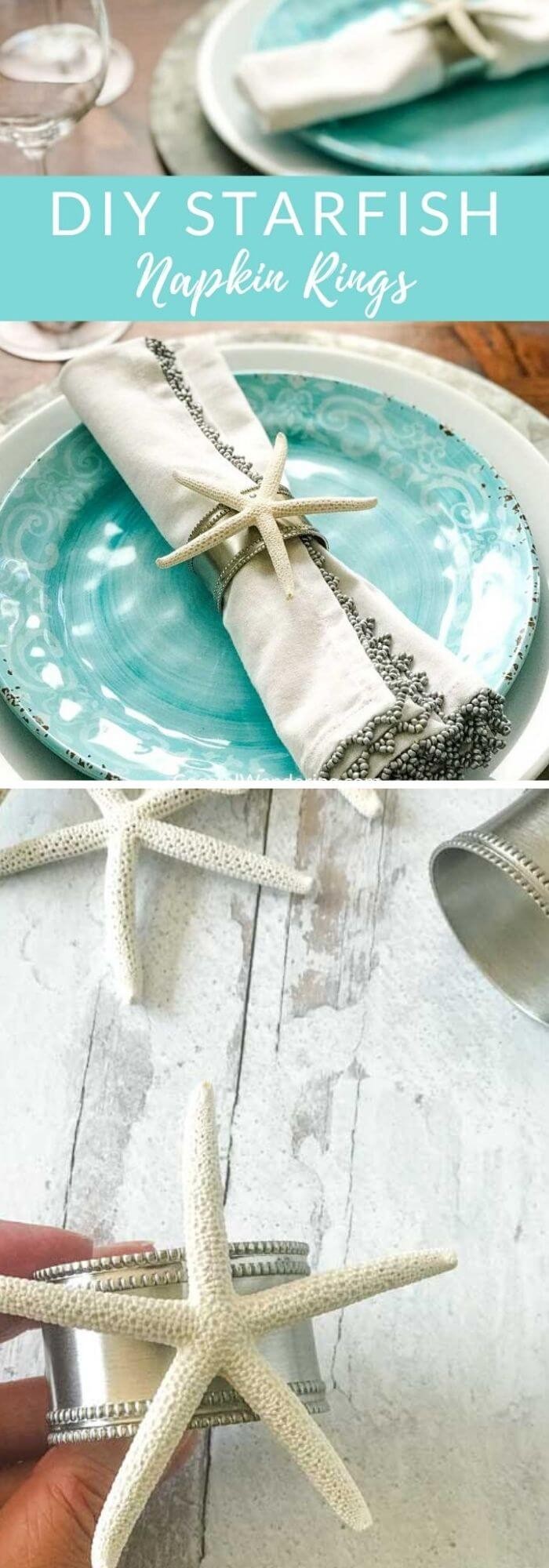13 Strange And Beautiful Bugs That Look Like Leaves (With Pictures)
When it comes to insects that resemble leaves, there’s a certain charm that draws us in. Perhaps it’s their remarkable ability to camouflage themselves in nature, or the delicate beauty of their wings as they shimmer in the sunlight. Whatever the reason, these leafy bugs are truly fascinating creatures. In this article, we’ll take a closer look at some of the most striking examples of insects that mimic leaves. We’ll delve into their habits and habitats, and explore how they survive in the wild.
So if you’re eager to learn more about these remarkable bugs, keep reading!
Some of the most notable leafy bugs include:* Alderflies, with their intricate details and delicate wings* Assassin bugs (Family Reduviidae), which use their leaf-like camouflage to ambush prey* The Dead-leaf Grasshopper (Chorotypus saussure), a master of disguise that blends seamlessly into its surroundings* The Dead-Leaf Moth (Uropyia meticulodina), with its remarkable wing patterns that resemble leaves* False Katydid, which uses its leaf-like appearance to evade predators* Giant Leaf Insect (Pulchriphyllium giganteum), a large and impressive example of this phenomenon* Indian Oakleaf Butterfly (Kallima inachus), with its striking resemblance to an oak leaf* Leaf Insect (family Phylliidae), which takes the concept of camouflage to new heights* Leaf Katydid (Pycnopalpa bicordata), a small but fascinating example of this type of insect* Leaf-footed Bug, which uses its leaf-like appendages to great effect* Leafhoppers, which use their rapid movements and leaf-like appearance to evade predators* Moss Mimic Stick Insect (Trychopeplus laciniatus), a master of disguise that can even mimic the texture of moss* Stick Insects, which use their leafy camouflage to blend into their surroundingsBut what does it mean for an insect to ‘look like’ a leaf?
Can leaf bugs fly? Are they harmful to humans? And what about katydids – are they harmless or do they pose a threat? We’ll answer these questions and more in this article, which takes you on a journey into the fascinating world of leafy bugs.
Strange and Beautiful Bugs That Look Like Leaves
Alderflies.
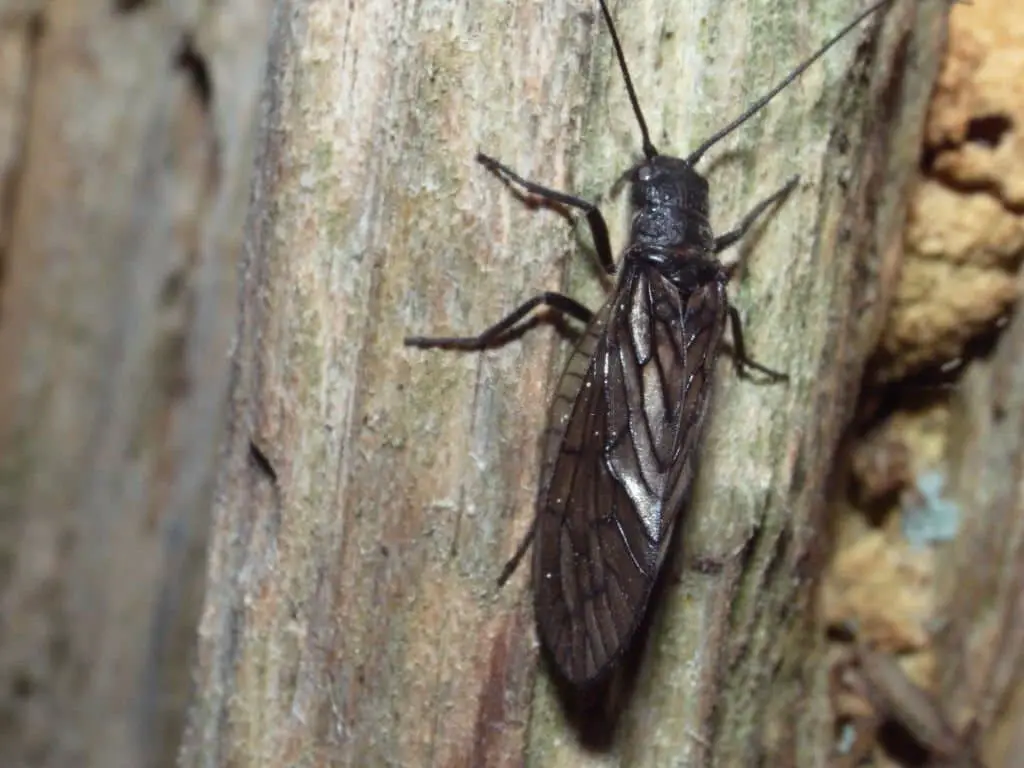
Alderflies are a common sight in North America, characterized by their brown coloration and two-inch wingspan. While they pose no threat to human health, these flies can become an unwanted presence in homes if left unchecked. Their affinity for light sources makes them prone to entering through open doors or windows, where they’ll often cluster around lamps and other illuminated areas.
To deter alderflies from taking up residence, consider swapping traditional white bulbs for yellow ‘bug lights’, which are less attractive to these pests. Alternatively, keep your home’s entry points sealed by closing windows and doors. If an infestation does occur, simply vacuum or capture the flies using a fly swatter.
Assassin bugs (Family Reduviidae).
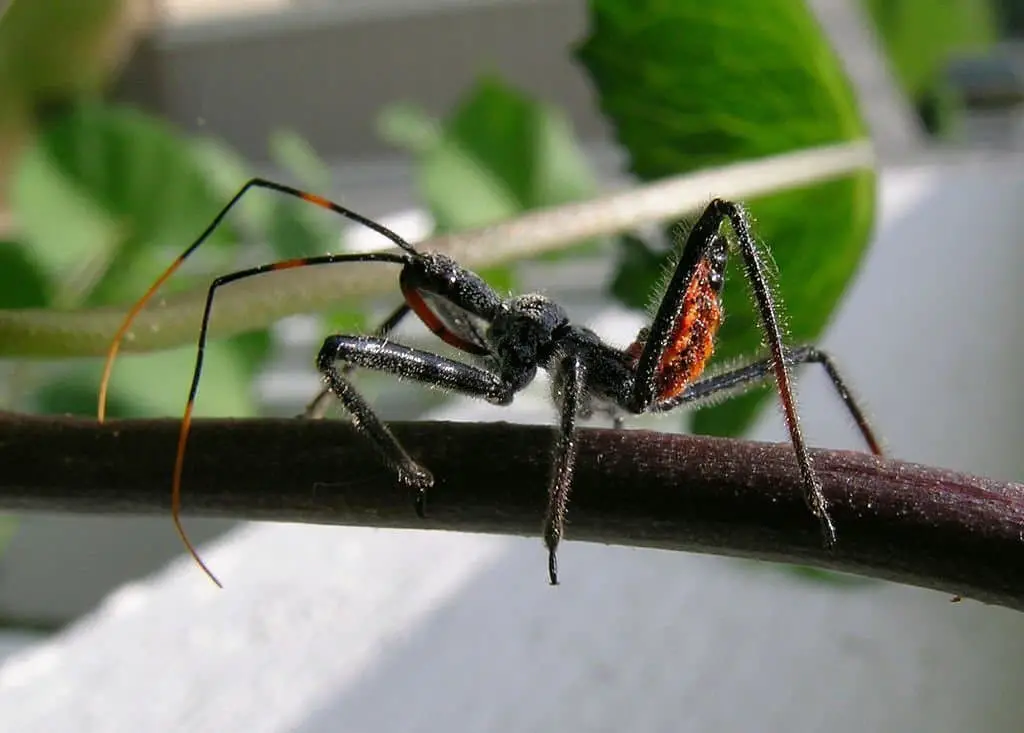
Assassin bugs belong to the subfamily Reduviidae within the true bug family Hemiptera, encompassing approximately 7000 described species worldwide. Their name stems from their predatory habits, preying on other arthropods like insects and spiders. Many assassin bug species are valuable predators of agricultural pests.
In terms of appearance, most assassin bugs have a brown or black coloration, although some species display vibrant hues.
They feature elongated bodies and employ their front legs to grasp prey while piercing it with their beak-like mouthparts and injecting digestive enzymes. Some species can grow up to 25 mm in length.
While assassin bugs are beneficial predators, they can also be pests. The bite of certain species, such as the wheel bug (Arilus cristatus), can be quite painful. Additionally, the blood-sucking habits of some assassin bugs can transmit disease-causing viruses to humans and other animals.
A notable difference between adults and nymphs is the presence of wings in adults, allowing them to fly, whereas nymphs lack wings and are unable to fly.
Assassin bugs feed on a diverse array of arthropods, including insects and spiders. Some species specialize in particular prey, while others are generalists that will consume whatever is available.
The life cycle of most assassin bugs involves three stages: egg, nymph, and adult.
Eggs are typically laid singly or in groups on leaves, stems, or other surfaces. Nymphs hatch from eggs and resemble adults but are smaller and lack wings. Adults have wings and can fly. Most assassin bug species live for one to two years.
Dead-leaf Grasshopper (Chorotypus saussure).
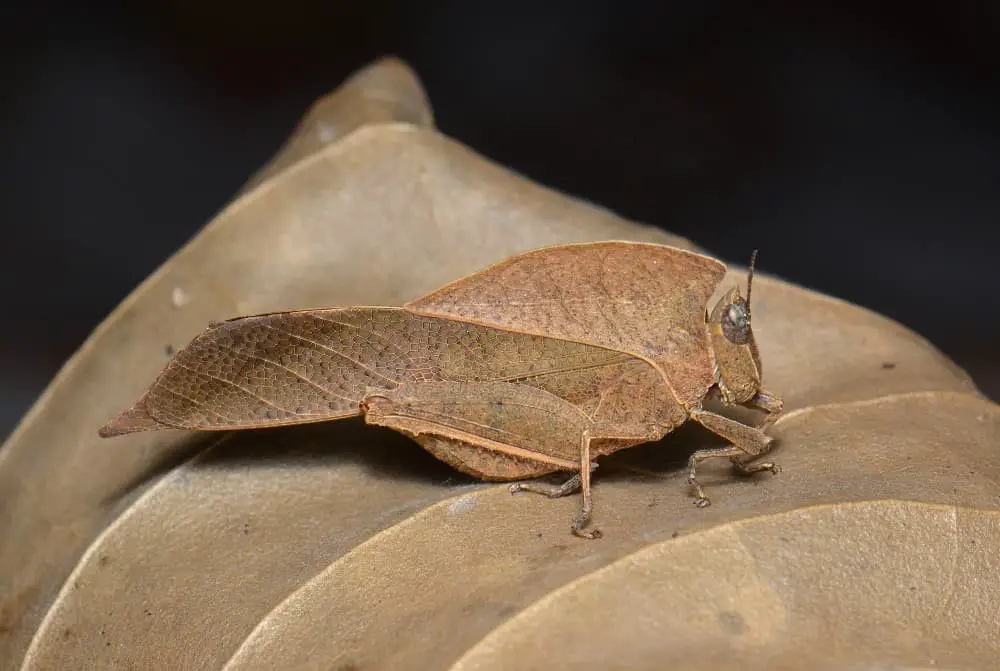
The dead-leaf grasshopper, a relatively small to medium-sized insect, is widely distributed across Africa, Asia, and Australia. Its unique appearance allows it to seamlessly blend in with its surroundings when at rest, adopting the guise of a lifeless leaf. This remarkable camouflage mechanism serves as a vital defense strategy against predators seeking to make a meal out of it.
Notably, the dead-leaf grasshopper’s body is typically green or brown in hue, accompanied by elongated hind legs that enable impressive jumping capabilities. As an herbivore, its diet consists mainly of leaves, flowers, and fruit, allowing it to sustain itself within its natural environment.
Dead-Leaf Moth (Uropyia meticulodina).
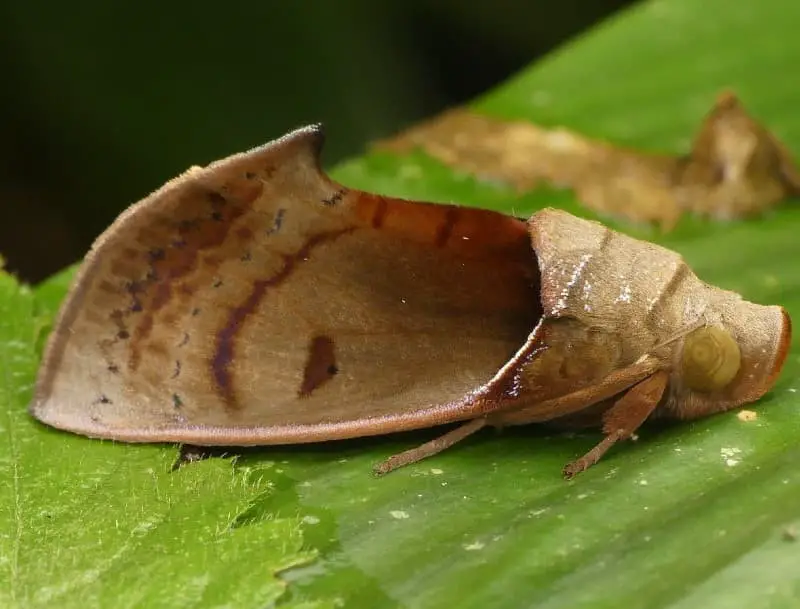
The dead-leaf moth is a fascinating species of tineid moth that is easily identifiable due to its remarkable leaf-like appearance. Measuring approximately 13mm in wingspan, the adult moth boasts a dark brown body covered with yellowish hair on its head and thorax, while its hindwings feature a pale brown hue with darker veins. In contrast, the larvae of this species are characterized by their green coloration adorned with yellow stripes.
These tiny critters feed on decaying leaves and organic matter, often causing mischief in gardens and greenhouses. The dead-leaf moth is widely distributed across eastern Australia, as well as New Zealand, Indonesia, Papua New Guinea, and Samoa, where it can be found inhabiting forests, woodlands, and gardens.
False Katydid.
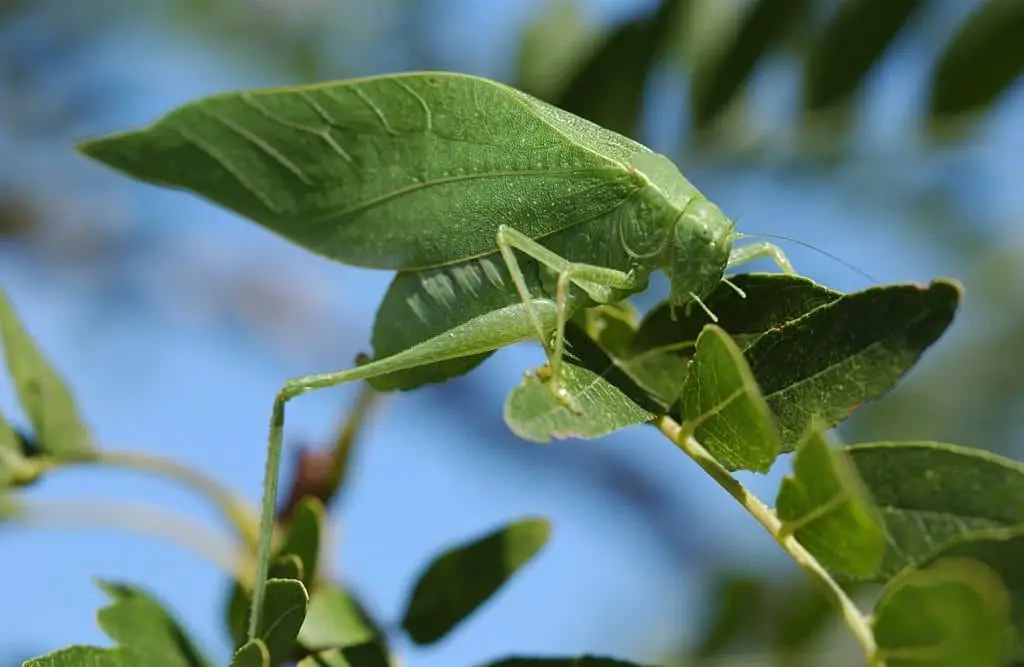
Giant Leaf Insect (Pulchriphyllium giganteum).
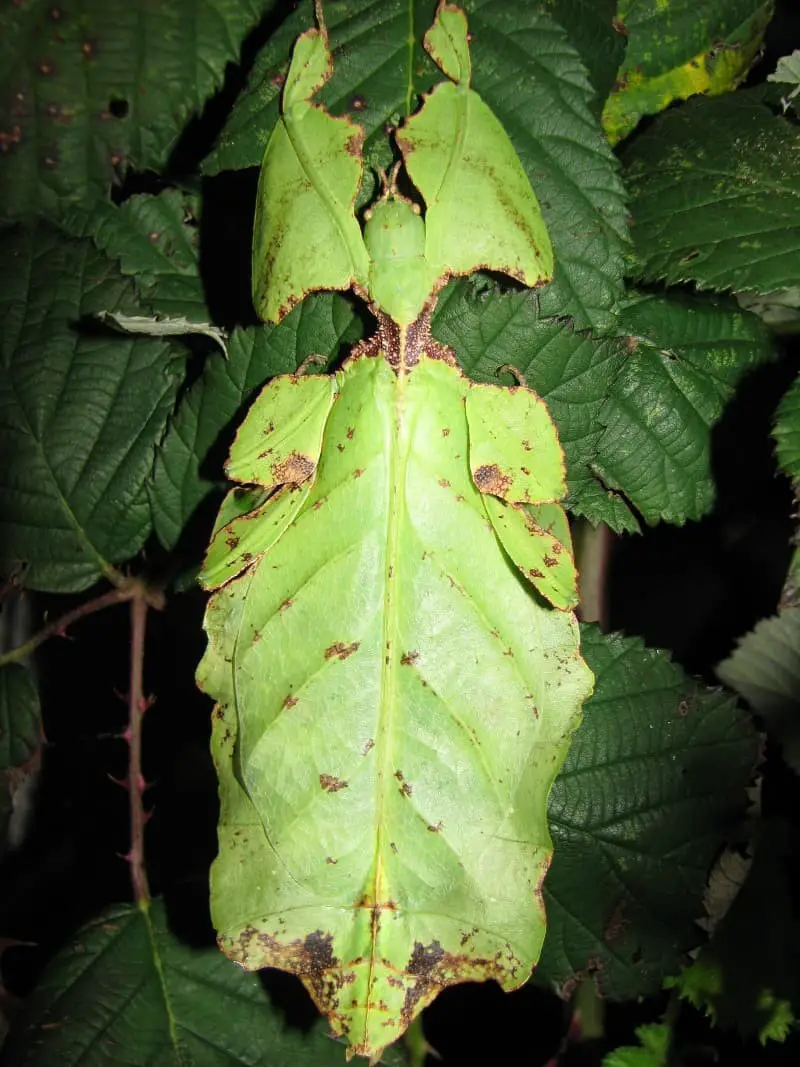
Giant leaf insects are a type of remarkable insect that thrive in the rainforests of Borneo and Indonesia. Their distinctive appearance, reminiscent of leaves, allows them to blend seamlessly into their surroundings, making them notoriously difficult to spot.
One of the largest species of leaf insects, giant leaf insects can grow up to 12 cm (approximately five inches) in length, with a green body that resembles a leaf, complemented by two large compound eyes and transparent wings featuring brown veining. As herbivores, their diet consists mainly of leaves, flowers, and fruits, which they consume at a relatively slow pace. They don’t fly frequently, only covering short distances when they do.
Despite their sluggish nature, giant leaf insects have an intriguing life cycle that involves three stages: egg, nymph, and adult. Female giant leaf insects lay their eggs on the leaves of rainforest trees, which hatch into nymphs that resemble miniature adults. Nymphs undergo several molts as they grow larger before eventually reaching adulthood, mating, and living for approximately six months.
Indian Oakleaf Butterfly (Kallima inachus).
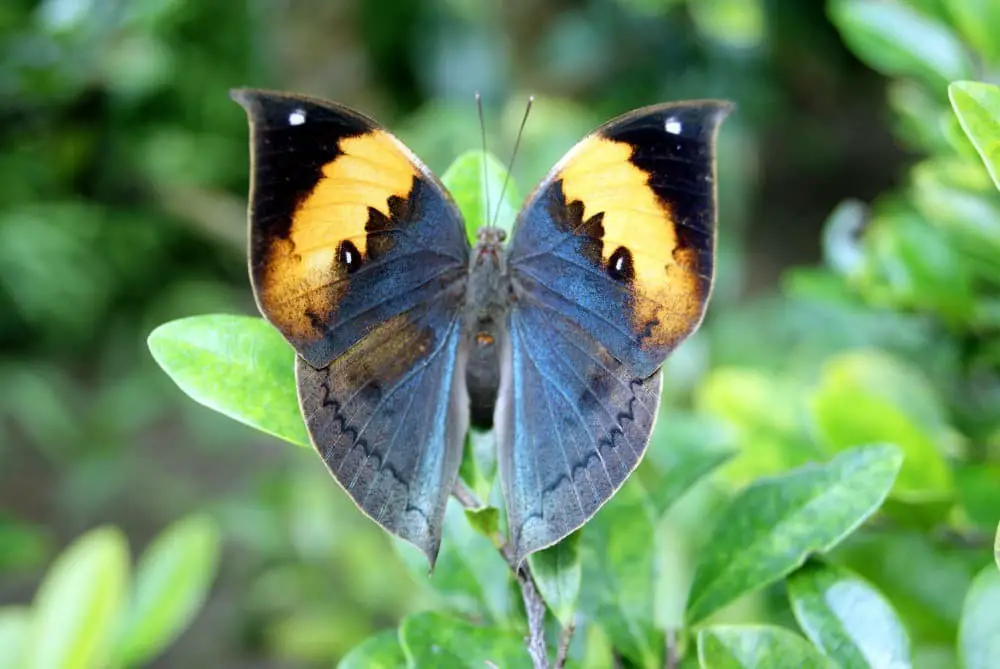
In the lush forests of tropical Asia, from India to Indonesia, a unique butterfly species thrives – the Indian Oakleaf. Its remarkable ability to mimic leaves, both in wing shape and posture, allows it to blend seamlessly into its surroundings, making it a challenging find among the foliage. This member of the Nymphalidae family, also known as brush-footed butterflies, gets its name from the striking resemblance of its hindwings to oak leaves.
When its wings are open, the Indian Oakleaf Butterfly showcases an eye-catching orange and black pattern. A slow-flying butterfly, it’s often spotted in forested areas, where it plays a vital role in pollination, making it not only a breathtaking sight but also a crucial part of the ecosystem.
Leaf Insect (family Phylliidae).
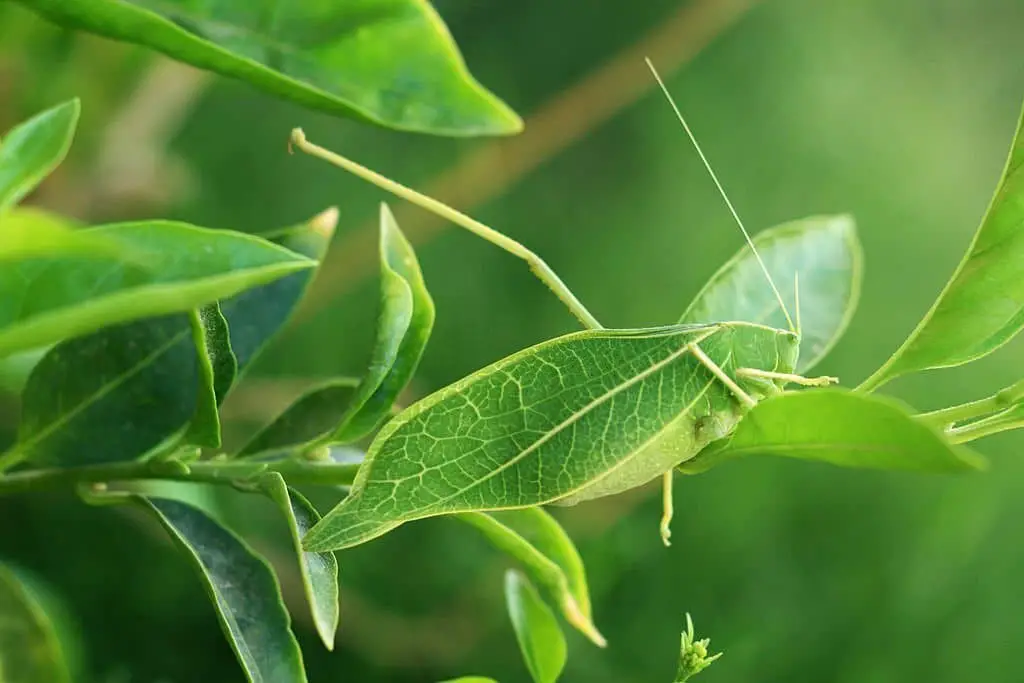
Leaf insects, also known as walking sticks or stick insects, belong to the order Phasmatodea and comprise approximately 3000 species. These insects have evolved an extraordinary ability to blend in with their surroundings, adopting a leaf-like appearance that serves as effective camouflage against predators and prey. Some species can even modify their coloration to match their environment, further enhancing their concealment.
As herbivores, leaf insects feed exclusively on plant matter, utilizing their elongated mouthparts to extract sap from leaves, flowers, and fruits.
Contrary to popular misconception, leaf insects do not possess the ability to bite. They pose no threat to humans or animals, and some enthusiasts even keep them as pets. With no harm inflicted upon any living being, these fascinating creatures are an intriguing subject of study and admiration.
Leaf Katydid (Pycnopalpa bicordata)
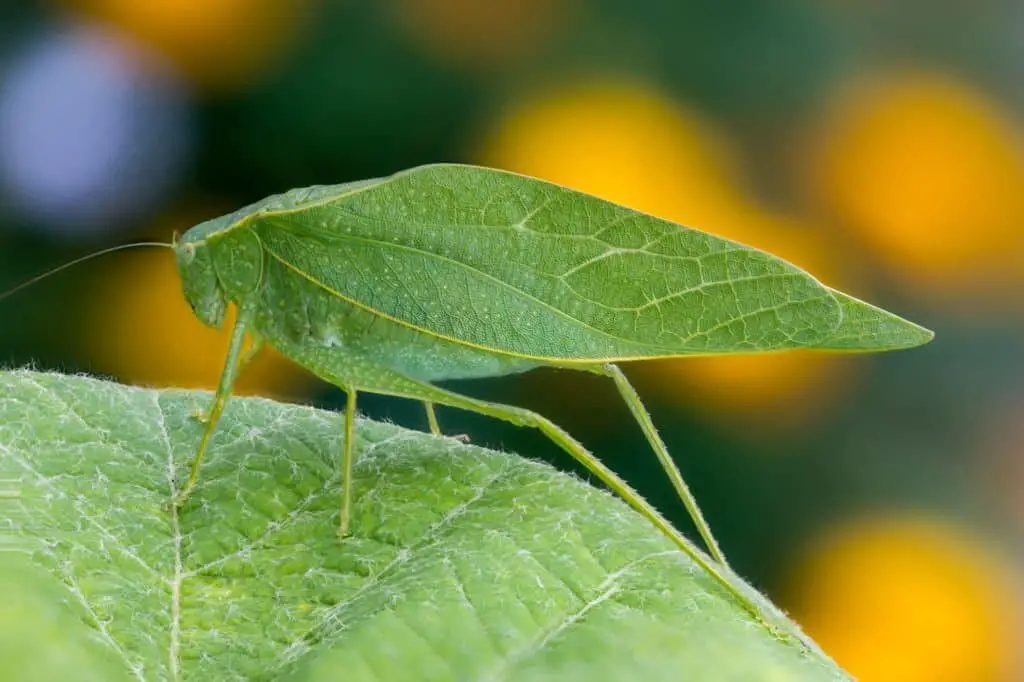
Leaf katydids are a type of green lacewing insect that’s often mistaken for grasshoppers due to their similar body shapes and habitats. However, they have some distinct characteristics that set them apart. One of the most notable features of leaf katydids is their leaf-like appearance. Their long, slender bodies and big eyes make them look like a miniature leaf, complete with veins. In fact, their front wings are green and mimic the coloration of leaves, while their back wings are clear.
These insects can grow up to two inches in length. Leaf katydids are predators that feed on other insects, including aphids, mites, and small caterpillars. They’re an important part of many ecosystems, helping to keep pest populations under control. The life cycle of a leaf katydid is typical of many insects. Female leaf katydids lay their eggs on plants, which hatch into nymphs that look like miniature adults. These nymphs grow and molt several times before they become adults.
Adult leaf katydids typically live for about four months. While leaf katydids don’t bite, they do have a defense mechanism. If they’re disturbed or threatened, they can emit a foul-smelling liquid from their abdomens to deter predators. So what’s the difference between a leaf katydid and a grasshopper? For one, leaf katydids are green while grasshoppers are usually brown. They also have long antennae, whereas grasshoppers have shorter ones.
And when leaf katydids fly, they make a distinctive clicking sound that grasshoppers don’t.
Leaf-footed Bug.
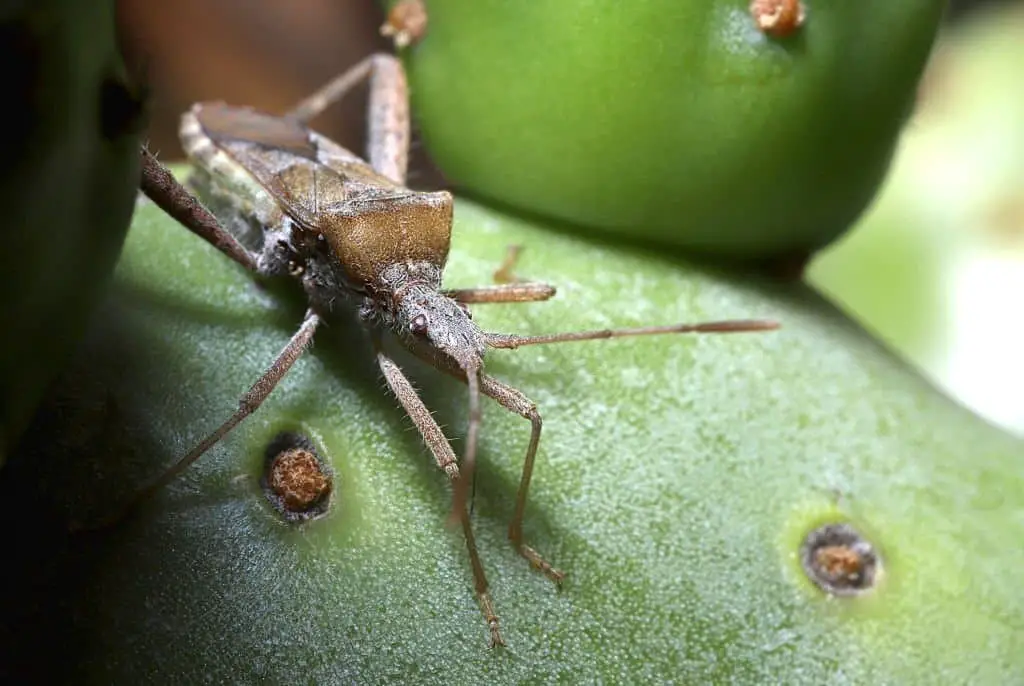
Leaf-footed bugs are a fascinating type of true bug that exhibit a range of characteristics. One distinctive feature is the leaf-like expansions on their hind legs, which give them their name. These insects come in many different species, with some being plant-eaters and others feeding on other insects. In terms of appearance, leaf-footed bugs can vary in size from approximately 0.25 to 0.75 inches long, with most having a brown or black coloration and some displaying colorful markings.
The shape and size of their leaf-like expansions also differ depending on the species, ranging from single large ones to multiple smaller ones. Leaf-footed bugs are primarily plant-eaters, feeding on a variety of fruits and vegetables. Some species will even feed on other insects. In gardens, they may be considered pests on plants like tomatoes, peppers, eggplants, and squash, but most are harmless to plants. These insects can be found in tropical and subtropical regions around the world.
In the United States, they are common in the southern states, inhabiting gardens, fields, and forests. Leaf-footed bugs reproduce by laying eggs on plant leaves, which hatch into nymphs that go through several stages before reaching adulthood. Females can lay up to 1000 eggs in their lifetime. The lifespan of these insects varies depending on the species, with some living for just a few weeks while others can live for several months.
Leafhoppers.
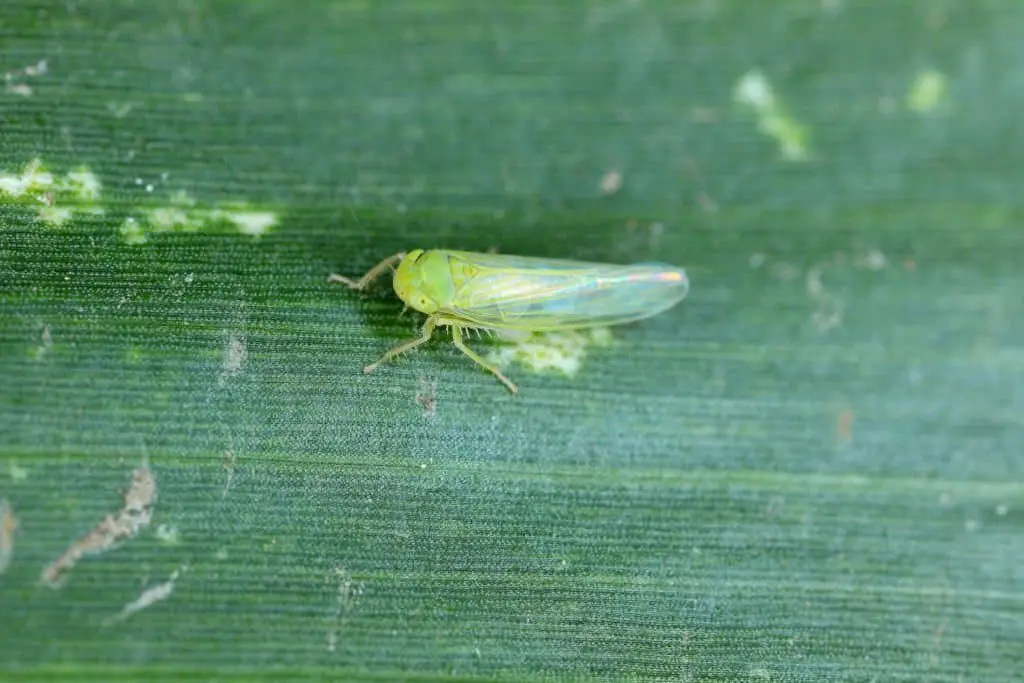
Leafhoppers are tiny, sap-sucking insects that inhabit the underside of leaves. Typically green or brown in color, they possess a flattened body shape and the ability to jump long distances, earning them their name. These pests feed by piercing plant leaves with their sharp mouthparts and sipping out the plant’s sap. This feeding damage can cause leaves to turn yellow or brown, potentially leading to plant death. Furthermore, leafhoppers can spread plant diseases as they feed.
In terms of physical appearance, leafhoppers are relatively small, measuring between 0.04 to 0.39 inches in length. They have a distinctive flattened body shape and usually display green or brown coloration. Some species may boast patterned wings. Leafhoppers often reside on the underside of leaves, where they feed on plant sap, and can also be observed jumping long distances. Leafhopper feeding damage can cause significant harm to plants.
The insects pierce plant leaves with their sharp mouthparts and suck out the plant’s sap, leading to yellowing or browning of leaves. In extreme cases, this damage can result in plant death. Additionally, leafhoppers can spread plant diseases as they feed. To eradicate leafhoppers from your garden, you can opt for manual removal or employ pesticides. Another approach is to attract natural predators, such as ladybugs, lacewings, and parasitic wasps.
To prevent infestations, maintain a clean and debris-free garden environment. Avoid overwatering, as this can create ideal conditions for leafhoppers to thrive.
Moss Mimic Stick Insect (Trychopeplus laciniatus)
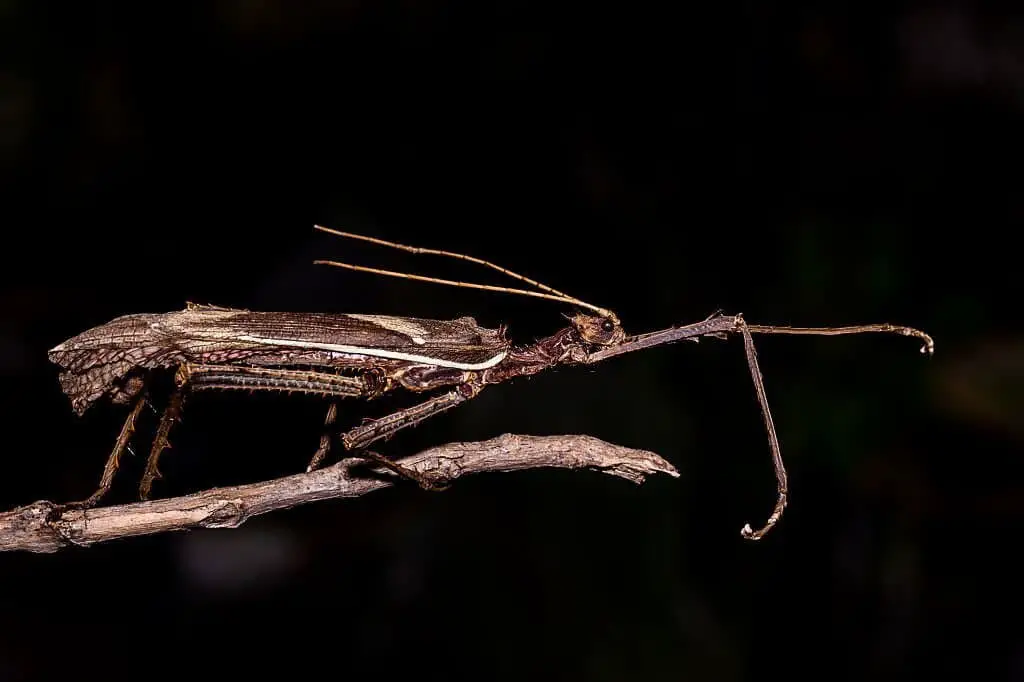
In the lush tropical forests of South America, a fascinating insect species has evolved to thrive in its environment – the Moss Mimic Stick Insect. This remarkable creature is renowned for its extraordinary ability to camouflage itself as a piece of moss or a leaf, a feat that allows it to evade predators and blend seamlessly into its surroundings.
But that’s not all; this insect also possesses the remarkable capacity to produce a sound that mimics the chirping of birds, further adding to its impressive arsenal of survival strategies. As an integral component of the ecosystem, the Moss Mimic Stick Insect plays a crucial role in maintaining the balance of other insects’ populations. Moreover, it serves as a vital food source for various animals, such as birds and lizards.
Its unique appearance is characterized by its small size, resembling that of a penny, with two long antennae and six legs. Herbivores by nature, Moss Mimic Stick Insects feed on leaves, utilizing their distinctive long mouthparts to suck the juice from these plant-based sustenance sources. Found in moist areas of tropical forests, where an abundance of leaves provides an ideal environment for survival, this insect species has adapted to thrive in its native habitat.
The reproductive cycle of Moss Mimic Stick Insects begins with egg-laying on the underside of leaves. These eggs hatch into nymphs that resemble miniature versions of adult insects, which undergo multiple molting processes before reaching adulthood. Interestingly, the lifespan of a Moss Mimic Stick Insect is approximately one year. Notably, these insects pose no threat to humans, as they do not bite or sting and are not known to carry any diseases.
With its remarkable camouflage abilities, unique characteristics, and vital ecological role, the Moss Mimic Stick Insect stands out as an intriguing species in the insect kingdom.
Stick Insects.
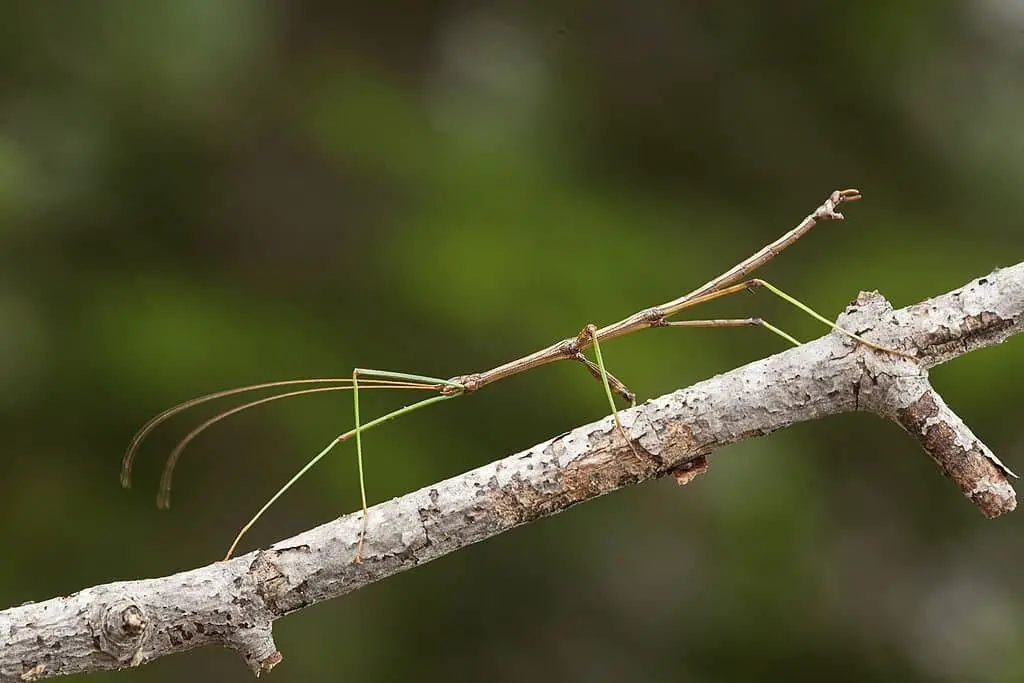
Stick insects are a fascinating group of long, thin insects that have evolved to perfectly mimic sticks or leaves in appearance. These remarkable creatures can be found in tropical and subtropical regions around the world, with over 3,000 species documented. One notable example is the Phobaeticus chani, which can grow up to 56 cm (22 inches) long, making it the longest stick insect recorded.
On the other hand, the heaviest recorded stick insect is the South African stick insect (Cretophasma giganteum), weighing in at a remarkable 65 g (0.145 lb). Stick insects have honed their skills of camouflage to perfection. Their elongated bodies and leaf-like markings enable them to blend seamlessly with their surroundings, while some species can even hold their legs close to their bodies to convincingly resemble twigs.
When threatened, stick insects may drop off their perch and fall to the ground or play dead as a last resort. If this tactic doesn’t fool the predator, they will often try to scare it away by frantically waving their legs and antennae in the air. Stick insects primarily feed on leaves, flowers, and fruits, but some species have been known to indulge in a diet of other insects, such as caterpillars.
As prey animals themselves, stick insects are hunted by various predators, including birds, lizards, bats, and rodents.
FAQs
What is a bug that looks like a leaf?
While there are numerous insects that resemble leaves, the true leaf bug is a unique species found in South America’s rainforests and belongs to the hemiptera family. These plant-feeding bugs employ their elongated proboscis to puncture plant tissue and extract sap, often concealing themselves on the undersides of leaves where they blend seamlessly into their surroundings.
As they may feed on ornamental plants and crops, leaf bugs can be a minor annoyance for gardeners; however, they typically don’t inflict significant harm on plant life. To manage leaf bug populations in your garden, consider manual removal or insecticidal soap application.
What insect looks like a brown leaf?
Cockroaches are often mistaken for brown leaves due to their similar appearance. However, a closer inspection reveals distinct differences. For instance, cockroaches tend to be smaller than leaves and exhibit a more defined body structure with six legs, whereas leaves are limbless. While the brown coloration may lead to initial confusion, it’s crucial to look beyond the surface level to accurately identify these insects as they don’t possess the characteristics of organic matter.
Are leaf bugs harmful?
While the prevalence of leaf bugs might not pose a significant threat to humans or animals, their impact on plants can still be detrimental. While they are generally considered harmless, individuals with allergies may experience adverse reactions following a bite. As such, it’s essential for those who suspect they’ve been bitten by a leaf bug to seek prompt medical attention.
In most cases, however, the primary concern is not human or animal harm, but rather the potential damage these insects can inflict on plant life.
Can leaf bugs fly?
Leaf bugs, often misunderstood as slow-moving insects, possess an impressive ability – they can indeed fly. This aerial prowess is made possible by their well-developed wings, which enable them to traverse vast distances with ease. Despite their somewhat lumbering reputation on land, leaf bugs have evolved to take to the skies, showcasing a remarkable adaptability that sets them apart from many of their insect contemporaries.
Can katydids hurt you?
While it’s unlikely that katydids will cause harm, there are a few exceptions worth noting. As generally non-aggressive insects, katydids only resort to biting humans when they feel threatened or provoked. If you keep your distance and show respect, the chances of being bitten are slim.
However, it is essential to acknowledge that katydids can be vectors for certain diseases.
Their bites can transmit serious illnesses like chikungunya and dengue fever, which can have severe consequences if left untreated. This highlights the importance of taking precautions when interacting with these insects.
What kind of bug has wings that look like leaves?
In the lush ecosystems of Central and South America’s tropical and subtropical regions, a remarkable insect thrives – the leaf-winged katydid. Its exceptional camouflage abilities allow it to blend in seamlessly with its surroundings, thanks to its striking green wings that mimic leaves to perfection. But what makes this bug truly remarkable is its impressive aerial capabilities, capable of not only flying forward but also deftly reversing direction, a feat few insects can match.
Conclusion
As our journey through the world of leaf-like insects comes to a close, it’s hard not to be struck by the sheer diversity and intricacy of these natural wonders. From the curious case of the walking leaf bug to the masterful mimicry of the katydid, each species has evolved its own unique way of blending in with its surroundings.
And yet, despite their remarkable camouflage abilities, many of these insects still manage to capture our imaginations with their striking forms and fascinating behaviors. As you read through this post again (or for the first time!), we’d love to hear your thoughts on what makes these leaf-like bugs so special – or if there’s one that particularly caught your eye. Feel free to share your comments below, and don’t forget to spread the word with fellow nature enthusiasts!
Related Posts
Hydrogen peroxide, baby powder, boric acid, ammonia, washing clothes, and Lysol are all touted as effective solutions for killing bed bugs. But do these common household items truly eliminate the pests? Let’s dive into the efficacy of each solution to uncover the truth.






